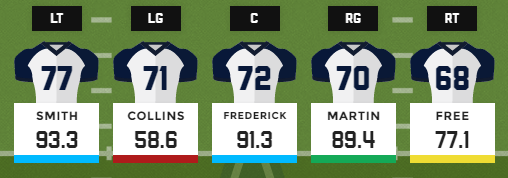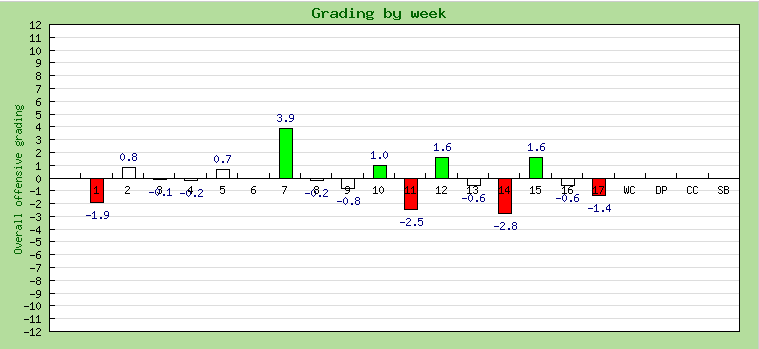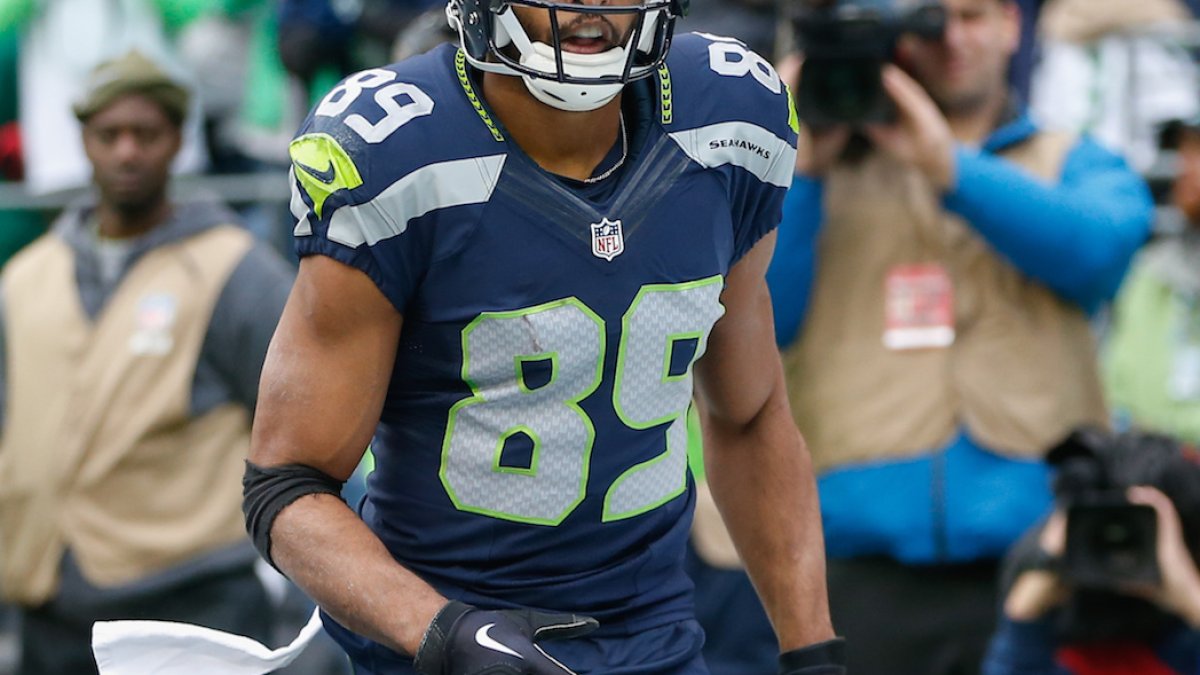Editor’s note: Every day in “Daily Focus,” PFF analysts take the latest NFL news and translate what it really means for each team involved.
Is Doug Baldwin worth the money for the Seahawks? Yesterday, the Seattle Seahawks announced that they had signed WR Doug Baldwin to a four-year, $46 million extension through the 2020 season. The deal makes Baldwin one of the highest-paid wide receivers in the NFL. Before the contract was signed, colleague Eric Eager wrote about how the Seahawk was on one of the most team-friendly wide receiver contracts in the NFL. That may no longer be the case, but after his play last season, he’s definitely still worth the money.
Baldwin has been one of the more underrated top wide receivers in the NFL ever since he came into the league in 2011. In each of his five seasons, he’s graded above at least +8.1 overall (0.0 is considered average on our cumulative scale), and last season he had a career-best +23.6 overall production grade. He’s been incredibly consistent, with only six career games graded below -1.0 (out of 90). Over the past three seasons, only seven receivers have a higher cumulative grade than Baldwin.

As great as Baldwin has been throughout his career, it was his play last season that really earned him that $46 million. He finished with the seventh-highest grade on the season, and over the last half of the year, no receiver earned a higher cumulative grade. He was one of 14 receivers to average more than 2.00 yards per route run on the season. QB Russell Wilson had a passer rating of 142.8 when targeting Baldwin, which was the highest in the league by far (second place was 121.2). But arguably the most impressive trait of Baldwin’s is his strong hands. Over the past three seasons, he has been thrown 201 catchable balls, and has dropped just seven of them. Last year he dropped just two passes on 80 catchable throws. That was the second-best rate in the league.
Baldwin has some of the surest hands in football, and is a consistently-impressive receiver season after season. The Seahawks made a good decision in extending him, even at the high cost. Last year’s performance did not feel like an outlier, and he should continue to lead the way for a strong receiving corps in Seattle.
Should the Cowboys give Ezekiel Elliot 300 carries this season? There are reports out there with some projections of 280–300 carries for Elliott in his rookie season. That translates to roughly 18–20 carries per game. If he breaks 300 carries, he’d be the first rookie running back to do that since Alfred Morris and Doug Martin in 2012.
In Elliott's last two seasons at Ohio State, he earned the highest overall grade of any college RB in that span. He carried the ball 566 times, broke 95 tackles, and fumbled just twice in that span. He runs downhill and rarely gets taken down for a loss. In his last two college seasons, he recorded 16 games with 20+ carries—it’s not crazy to think he could do that for a whole season in the NFL.

The Cowboys' O-line also makes this workload plausible. Despite a revolving door of non-workhorse running backs last season and no real passing threat for most of the year, the Cowboys' offense managed to rush for 1,892 yards on 407 attempts. That was the ninth-most yards in the entire league. LT Tyron Smith, C Travis Frederick, and RG Zack Martin are all top-five or better at their position. Even LG La’el Collins, the “weak link” of the line, flashed some brilliance last year and should improve in his sophomore season.
2015 season grades for the Cowboys' offensive line

If the Cowboys' offensive line stays healthy and can give Elliot more than 2.1 yards before contact per carry (as they did last season), there’s no reason to stop giving him the ball. Everyone saw how important QB Tony Romo is to Dallas last season when he was injured. Keeping him healthy has to be a main priority for them, and there’s no better way than a healthy dose of Zeke.
Amari Cooper should improve on an up and down rookie season: Reports out of Oakland are very positive in terms of the development of sophomore wide receiver Amari Cooper. His rookie year had some excellent games sprinkled in with some bad ones, as he graded out as just the 51st overall receiver last season.
The biggest reason Cooper graded so low was his issue with drops. It was a strange problem, because nobody considered that to be a concern with him in college. In 2014, Cooper saw 132 catchable targets at Alabama, and dropped just eight of them. That’s a drop rate of just 6.06, the 26th-best rate in the country that year. In his rookie NFL campaign, however, he dropped a league-leading 18 passes on 90 catchable balls. That’s a 20.0 percent drop rate. It’s such an extreme difference that it’s most likely an anomaly; only one receiver in the past nine seasons has recorded a worse drop rate in a season (Braylon Edwards, 2008) so the signs point to an improvement this year.
Cooper averaged 1.86 yards per route run last season, which was the 16th-best in the league. He flashed big on the deep ball, catching 10 of 17 throws more than 20 yards downfield, and actually didn’t drop any of them. His 58.8 percent catch rate on such throws was the third-best among receivers. He also forced 14 missed tackles, which ranked 10th among receivers.
Clearly there was a lot to like from Cooper last season. He frequently showed the ability that everyone expected from him coming out of college. If he can shore up those drop issues and continue to improve his chemistry with QB Derek Carr, look for Cooper to have a potential breakout season this year.



 © 2024 PFF - all rights reserved.
© 2024 PFF - all rights reserved.